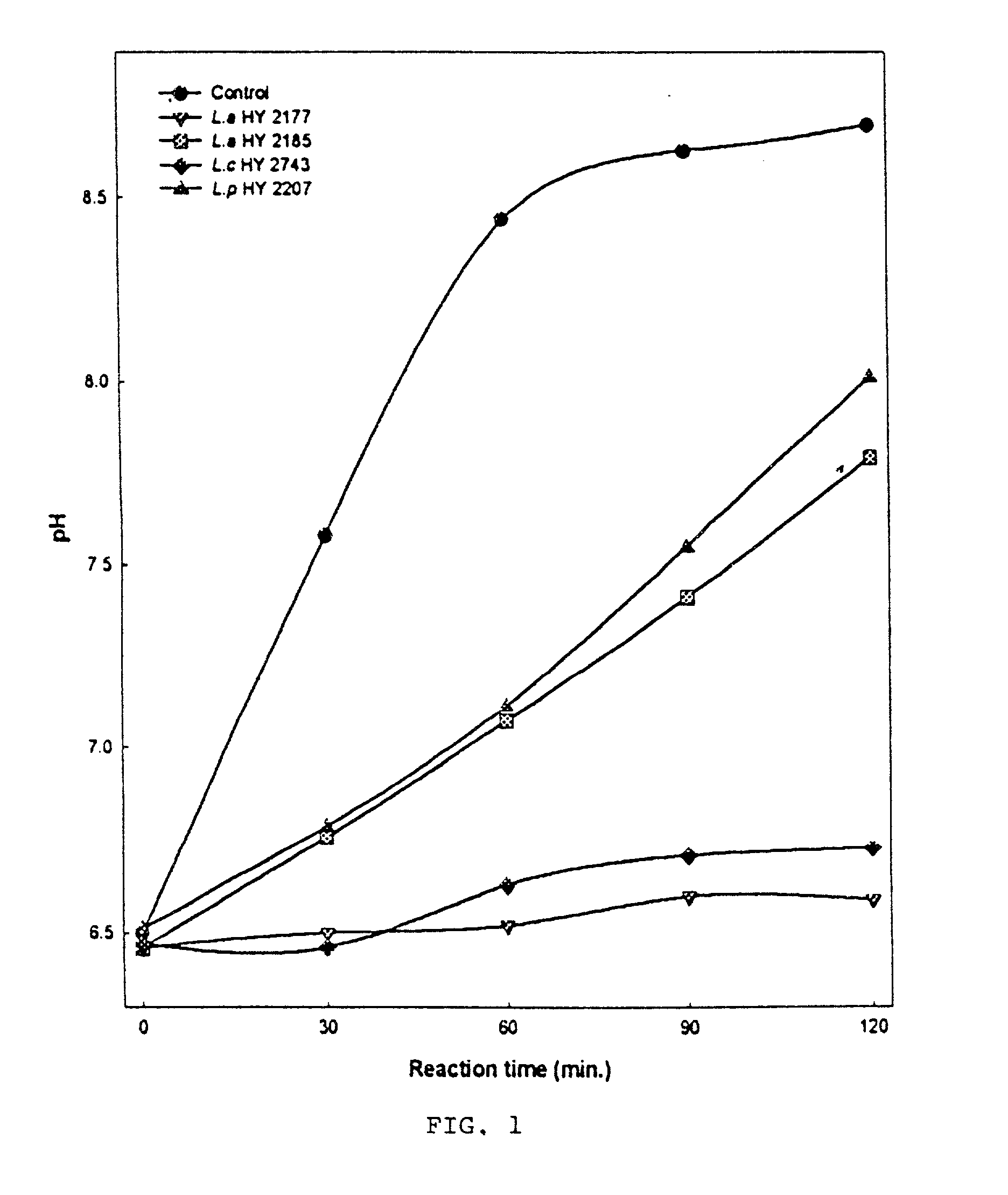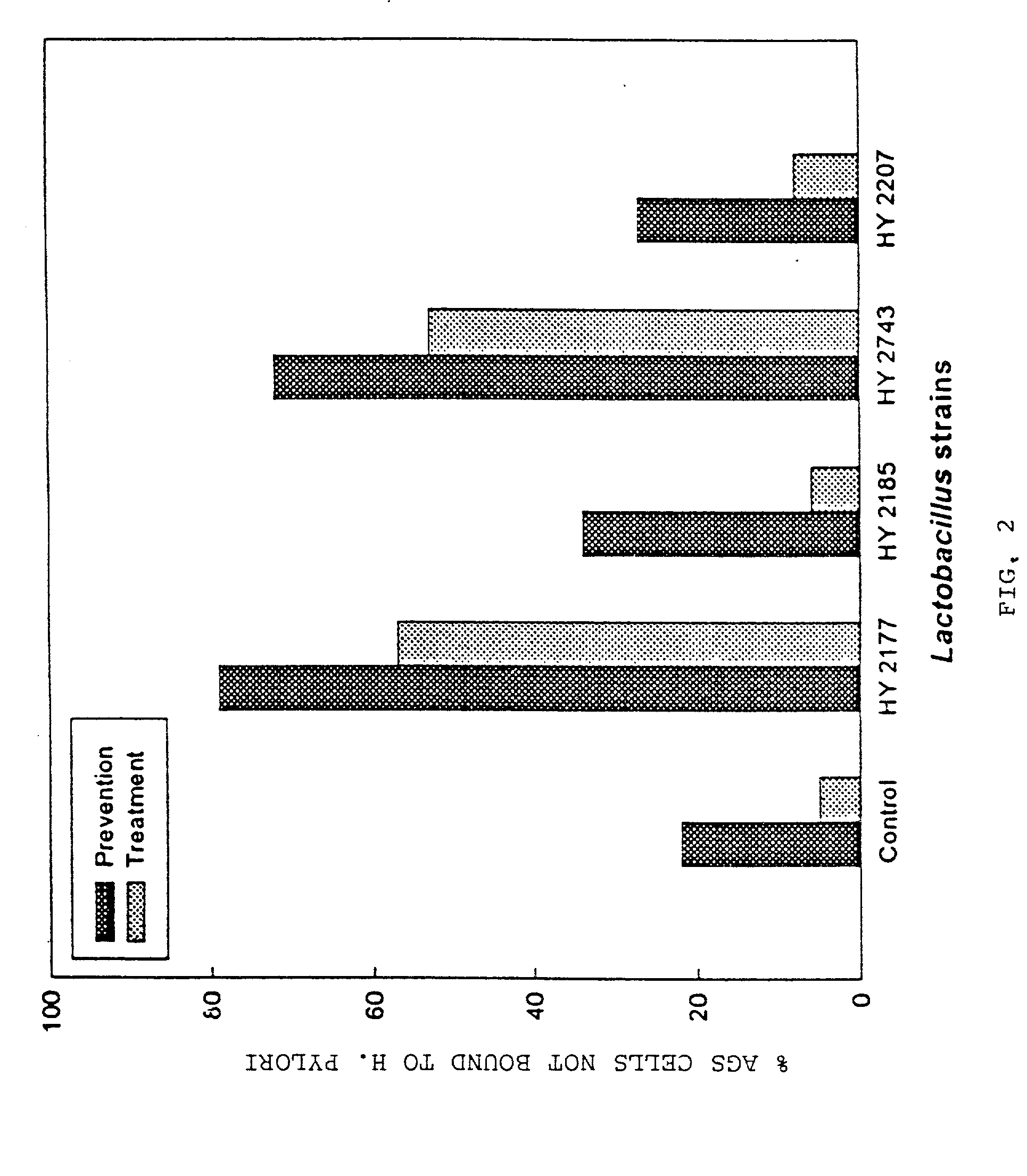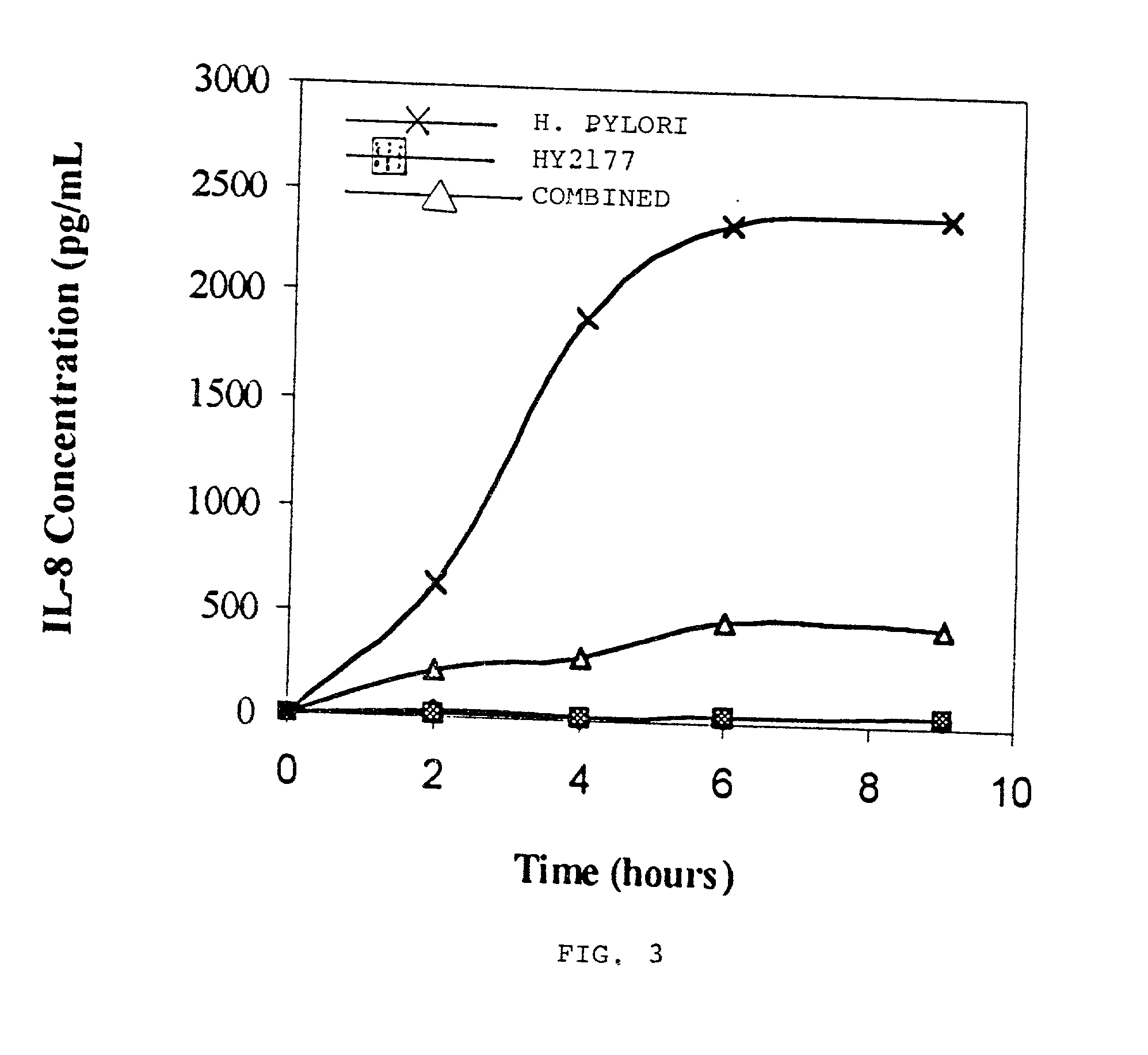Food containing active strains for inhibiting infection and treating gastritis, gastric and duodenal ulcers
a technology of active strains and food, applied in the field of h. pylori, can solve the problems of inability to replicate in the stomach the effect of experiments conducted in vitro, unsatisfactory long-term treatment of gastric acid secretion, and inability to achieve the effect of reducing the size of the stomach, and achieving the effect of facilitating binding and larger in siz
- Summary
- Abstract
- Description
- Claims
- Application Information
AI Technical Summary
Benefits of technology
Problems solved by technology
Method used
Image
Examples
example 2
[0050] Manufacture of H, pylori-antibodies in Eggs
[0051] The flagella is not separated from outer membrane in Example 1 above, because separation is difficult; it is also needlessly expensive to separate proteins of similar molecular mass. Flagella / outer membrane antigen obtained in Example 1 was mixed with the novel adjuvant and shot by intramuscular injection into the pectoral muscles of white leghorn hens 40 weeks old, at intervals of 2 weeks until a sufficiently high level of antibody was obtained. The concentration of flagella / outer membrane in the adjuvant is in the range from 60 mg / ml to 200 mg / ml, typically about 100 mg / ml; and typically 1 mg / ml in 1 ml is injected each time.
[0052] The characteristic value of antibody transferred into an egg was measured using Microtiter method as follows.
[0053] The aqueous protein fraction of egg yolk containing antibodies obtained as described above from eggs collected every 2 weeks, is mixed with an aqueous solution of lambda carrageenan ...
example 3
[0056] Measuring Antibody Value of Three Pathogenic Factors in Combination
[0057] A sample was formulated by combining 200 .mu.g of urease; 400 .mu.g of outer-membrane membrane; and 400 .mu.g of flagella, with an equal weight of oily adjuvant. 1 ml of this sample was injected into 30 week old white leghorn hens, and the level of antibodies stimulated were measured at various intervals over 14 weeks. The production of antibodies was measured by the Microtiter method. The results obtained are set forth in Table 2 below.
2 TABLE 2 Period after injection Antibody value (weeks) (measured by Microtiter) 0 >20 1 40 2 80 3 160 4 320 6 640 8 1280 10 1280 12 1280 14 640
[0058] As evident from the above, the antibody value reaches a maximum after about 8 weeks and diminishes after about 14 weeks.
example 4
[0059] The Inhibition Effect of H, pylori on the Production of Urease
[0060] The inhibition of urease production by the selected four active strains L. acidophilus HY2177 and HY2185, L. casei HY2743 and L. plantarum HY2207 was determined as follows:
[0061] After cultivation of H. pylori for two days in brucella agar, the cells were washed twice with 20 mM (millimolar) phosphate buffered saline (pH 7.0) and sonicated for 6 min at 4.degree. C. After centrifuging at 110 g for 10 min, the supernatant was used as a source of crude urease. Each lactic acid strain was cultivated in 12% skim milk for 24 hrs at 37.degree. C. after inoculation of the seed culture (10.sup.6 cfu / ml). Urease activity is determined by measuring the pH at 30 min intervals over a period of 2 hrs to observe the change in pH. 800 .mu.l of crude urease and 1.6 ml of cultivated lactic acid bacteria were added into a urea broth (13.6 ml) and adjusted to pH 6.5. FIG. 1 is a plot of pH as a function of time; it is seen that...
PUM
| Property | Measurement | Unit |
|---|---|---|
| temperature | aaaaa | aaaaa |
| temperature | aaaaa | aaaaa |
| length | aaaaa | aaaaa |
Abstract
Description
Claims
Application Information
 Login to View More
Login to View More - R&D
- Intellectual Property
- Life Sciences
- Materials
- Tech Scout
- Unparalleled Data Quality
- Higher Quality Content
- 60% Fewer Hallucinations
Browse by: Latest US Patents, China's latest patents, Technical Efficacy Thesaurus, Application Domain, Technology Topic, Popular Technical Reports.
© 2025 PatSnap. All rights reserved.Legal|Privacy policy|Modern Slavery Act Transparency Statement|Sitemap|About US| Contact US: help@patsnap.com



